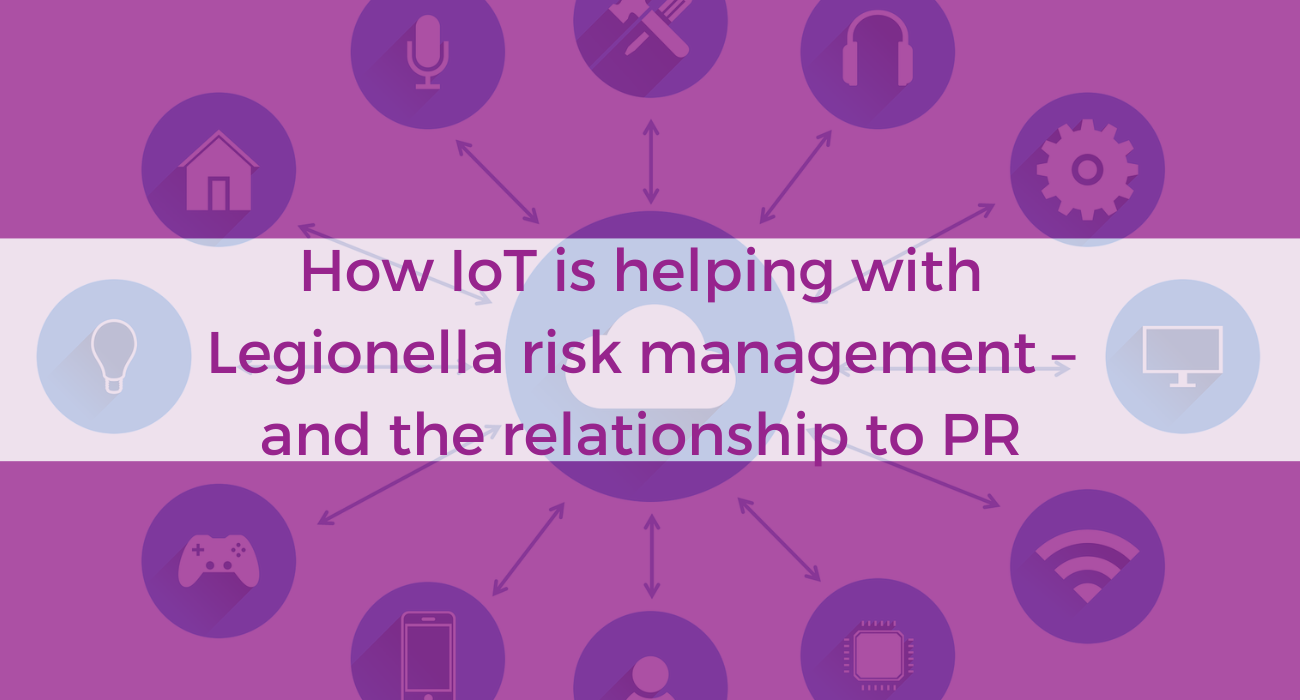
How IoT is helping with Legionella risk management – and the relationship to PR
Legionella made headlines recently, for all the wrong reasons. These waterborne bacteria, responsible for severe respiratory illnesses, like Legionnaires’ disease, pose a significant public health risk when not managed properly. The traditional approach to Legionella risk prevention, relying on manual, labour-intensive readings at monthly intervals of water systems, has proven insufficient, and can miss outbreaks that can occur between these readings.
By harnessing the power of IoT and automation, alongside the use of low-power sensory devices and powerful network connectivity, this method for monitoring the water outlet and sentinel temperatures within the pipes of water systems can be streamlined, offering benefits for health and safety, compliance, and the bottom line. But, what does this have to do with PR too?
The scale of the problem
Legionella bacteria is found in freshwater environments and man-made water systems. It can become a health risk in the latter when allowed to spread. This often occurs when water remains stagnant and reaches temperatures conducive to Legionella growth. By inhaling water droplets from these contaminated sources, people can develop Legionnaires’ disease.
In the UK and the EU, Legionella outbreaks are not uncommon, occurring at a rate of around 1.9 cases per 100,000 people in the EU in 2020. Outbreaks can have severe consequences, both in terms of public health and business compliance. Consider the backlash from the news about the Bibby Stockholm barge recently and the crisis that occurred there. Further, the Health and Safety Executive (HSE) in the UK provides guidance for Legionella monitoring to be adhered to. Its guidance emphasises the importance of proactive management to prevent outbreaks and maintain public safety. Compliance and reporting according to HSE regulations is vital, and failure to do so can result in significant legal and financial consequences.
For many organisations, though, the current process for Legionella risk management relies on labour-intensive processes that could be improved and streamlined. Monthly readings are often taken at sentinel points in water systems, which is resource-intensive and costly. This is because they generally require using a person to take readings of water systems and using paper-based systems to track and record measurements. However, paper record-keeping and manual approaches introduce opportunities for human error to creep into record-taking.
Moreover, relying only on monthly readings increases the risk of missing Legionella outbreaks that could occur between readings. An issue exacerbated by the fact that readings are often taken by non-specialist staff, instead of by experienced, trained industry professionals.
IoT’s role in Legionella risk management
An automated IoT solution, on the other hand, provides real-time monitoring through sensory devices connected to water pipes – such as the solution offered by our client Heliot and its partner Cistermiser.
Cistermiser’s devices ensure continuous surveillance of the temperature of the water inside pipes throughout a building, eliminating the potential for missed outbreaks in between readings. The data collected by these readings is then transmitted and stored in the cloud for management teams to draw insights from. Once the time comes to submit relevant readings to the HSE, in compliance with the HSG274 regulation, a logbook can be generated quickly with this kind of technology, collating information in a compliant reporting document, suitable for the HSE.
Within this IoT set up, Heliot’s Sigfox connectivity plays a key role. Sigfox’s Low Power Wide Area Network (LPWAN) technology enables the efficient transmission of data in real time. This network connectivity and capability is crucial to enable the rapid detection and response required in Legionella prevention.
What does Legionella and IoT have to do with Neo PR?
As you can see both Heliot and Cistermiser are playing a vital role in helping to manage this problem. And, there are many technology-based businesses out there that are finding new and innovative ways to solve an array of business problems.
This is just one of the many kinds of technologies, brands and stories that we are helping our clients to shout out loud about, as part of their wider thought-leadership PR campaigns.
In this case, we helped Heliot tell its story to the enterprise tech and IoT media, to help it raise brand awareness for its connectivity solutions. We achieved this by developing a press release that announced its partnership with Cistermiser and by creating a supporting issues-based article that addresses how IoT is solving the problem of legionella risk management. Our content and outreach was well received by the media after we pitched it out. We achieved high-quality coverage in key publications that include: Computer Weekly, IoT Insider and FM Industry.
To find out more about how your business can benefit from the same kind of storytelling, please contact PRworks@neopr.co.uk.




